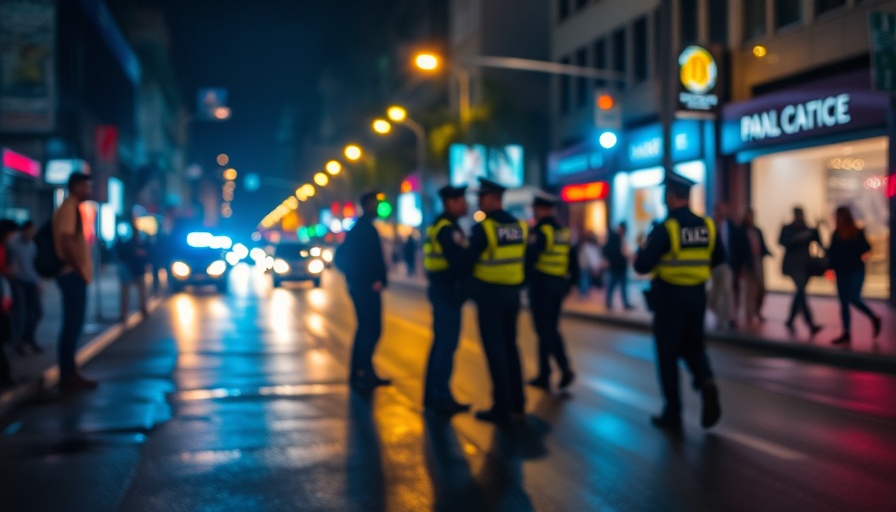
Understanding the Incident: A Closer Look at the March 8 Shooting
On March 8, 2025, a perplexing incident unfolded in San Francisco, sparking debates around officer-involved shootings and the mental health of those involved. An alarming situation arose when a man was reported for brandishing a firearm over his fence, allegedly in an attempt to quiet down neighborhood children. The evolution of this event highlights the intricate dynamics between mental health challenges, community safety, and police response.
The Role of Mental Health in Policing
Witnesses reported the man was under significant emotional distress, which was confirmed by his wife. She disclosed that he had been drinking and possessed multiple firearms. This revelation brings to light an essential consideration in law enforcement — the increasing prevalence of mental health crises in police encounters. As law enforcement officials often find themselves first responders to mental health situations, it is imperative for departments to enhance training in de-escalation techniques and crisis intervention strategies.
Community Relations and Police Accountability
The incident’s backdrop, where a man brandished a gun towards children and aimed at a police drone, raises significant issues surrounding community relations. Public confidence in law enforcement hinges on transparency and accountability. The San Francisco incident serves as a pertinent example of how police actions are scrutinized, especially in situations involving firearms and potential harm to civilians. This incident exemplifies the urgent need for ongoing discussions around police use of force guidelines and policies that prioritize community safety without compromising accountability.
The Technology Behind the Approach: Benefits of Police Drones and Body Cameras
In the age of advancing technology, the use of drones in law enforcement unveils new dimensions of safety and surveillance. Drones can provide real-time data, enhancing situational awareness for officers during critical incidents. However, this situation also illustrates the potential for misunderstandings involving peace officers and the tools at their disposal. The integration of police body cameras plays a similar role in reinforcing transparency and accountability, documenting encounters to provide clear records of events. This can be invaluable not just for administrative review but also for community reassurance.
Future Implications for Law Enforcement Policies
As communities grapple with the implications of this incident, it signals a pivotal moment for law enforcement policy reform. Proactive changes could include comprehensive mental health training for officers, increased community outreach programs, and a reevaluation of current use-of-force protocols. Law enforcement agencies must stay ahead of evolving societal expectations and the pressing need for mental health advocacy in police encounters. Moving forward, departments across the board might need to reformulate their approaches to incidents like these, emphasizing prevention and community engagement.
Conclusion: A Call for Action
The recent officer-involved shooting in San Francisco underscores the necessity for multidimensional strategies to address the realities of mental health crises, community policing, and the accountability of law enforcement. By fostering a culture of continuous learning and engagement, departments can work to restore trust between police and communities and adapt to the challenges of modern policing effectively. This ongoing dialogue is essential not only for the reform of policing practices but also for the safety and well-being of the communities they serve.
 Add Row
Add Row  Add
Add 

 Add Element
Add Element 




Write A Comment